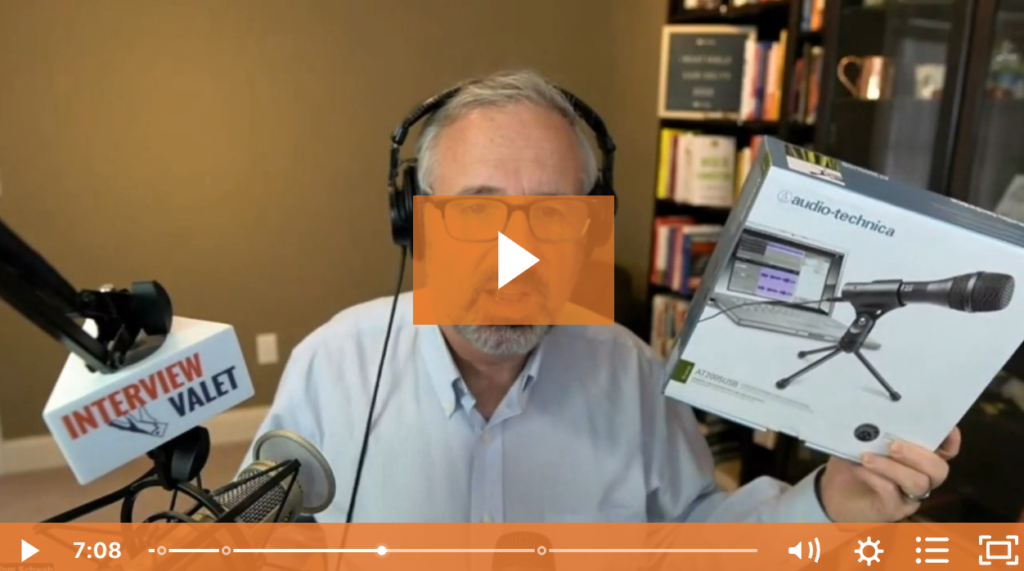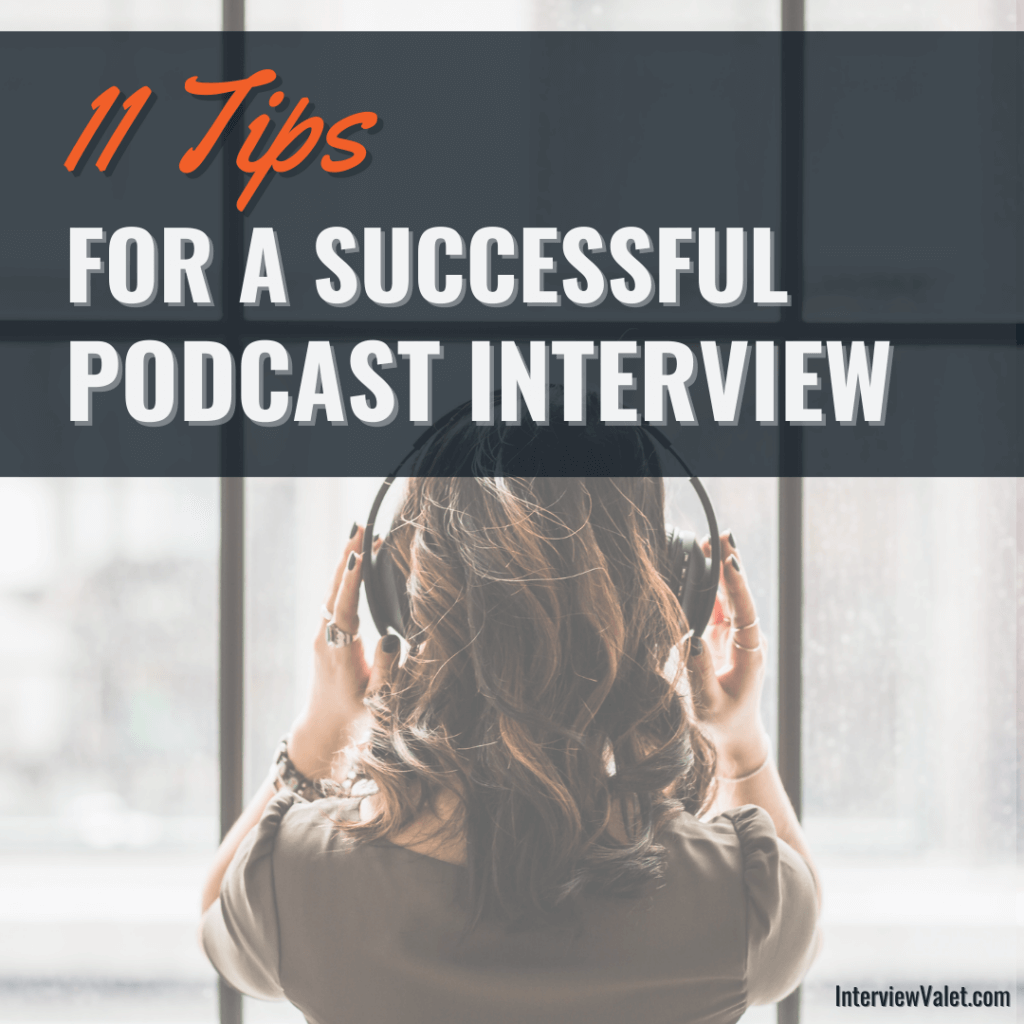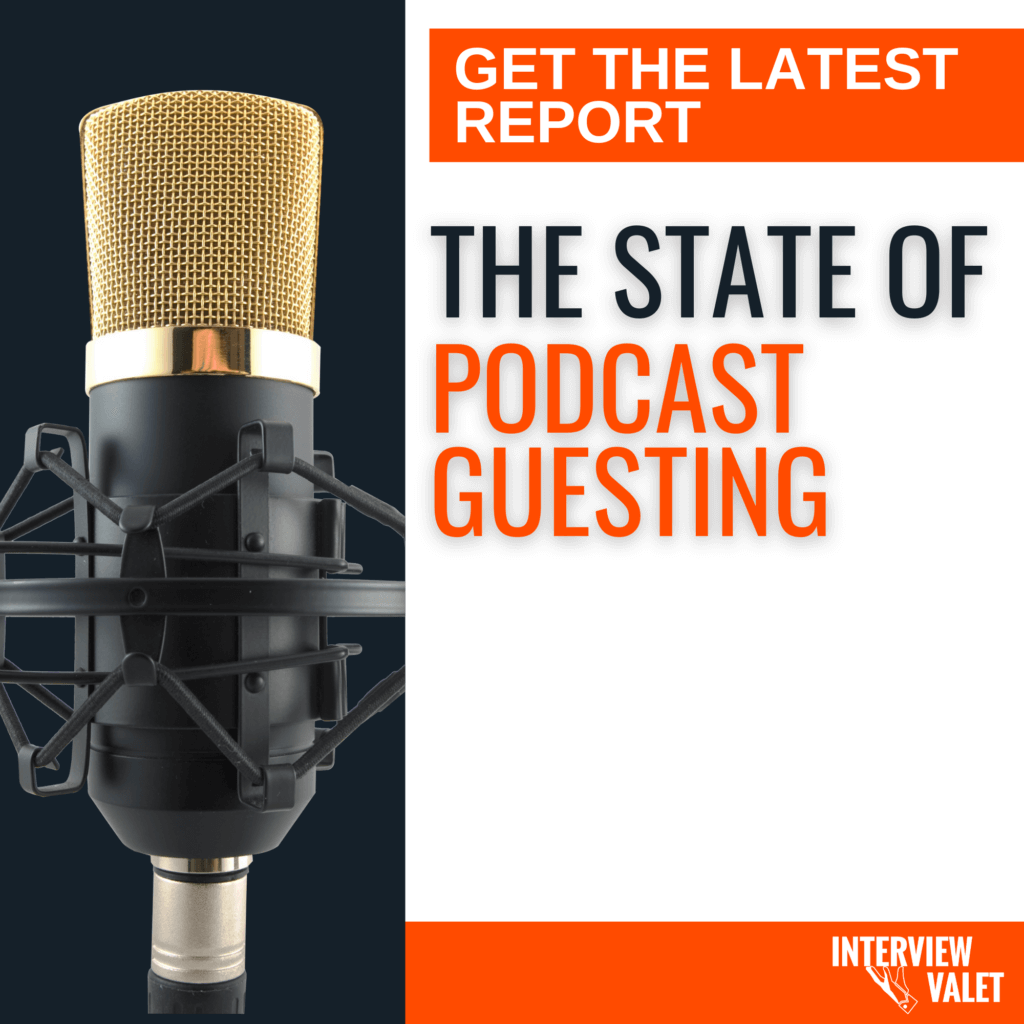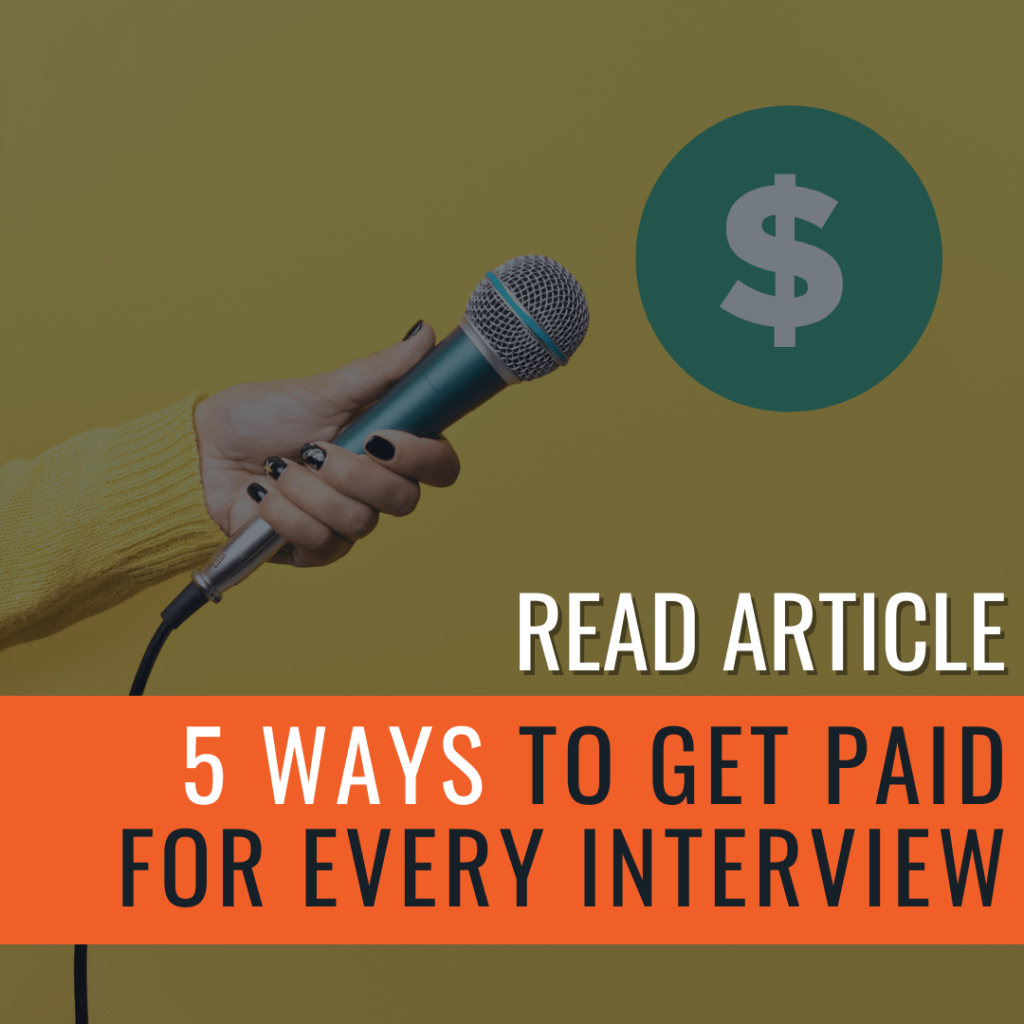It doesn’t matter how great your message is or if you are an industry leading expert, if you show up to a podcast guest interview with subpar equipment it will minimize your expertise.
Sounding like a pro starts with the right equipment.
There is reason that a professional microphone is part of our client welcome packages. We know they are experts and have a story to share but their message won’t go beyond the podcast recording if they have poor audio.
Equipment choices like microphones and headphones are nearly limitless but there are some key things to consider before making a purchase.
Here is the basics you need to know before making a purchase and the equipment we recommend to our clients.
Microphones
There are two main classes of microphones: Dynamic and Condenser.
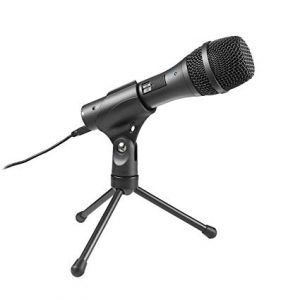
Dynamic Microphones
You see performers use dynamic mics when their mouth is close to the microphone. For most podcast guests these mics work well. They are great for not picking up background noise from other room, fans, clocks, pets or the outdoors. Some of our Founder Tom Schwab’s best and biggest interviews (he’s been on more than 1,000 shows) have been done in a noisy hotel with a dynamic microphone, a computer, and a strong internet connection.
In our experience, we’ve found the ATR 2005 USB to be a great dynamic microphone and is decently priced, costing less than $100 on Amazon. The professional grade mic plugs into any computer with a USB port so you don’t need a mixer. We’ve found it to be much better quality than the cheaper commercial grade ATR-2100 USB where the on/off switch fails at an annoying rate for us. Plus the ATR 2005 comes with a much better warranty.
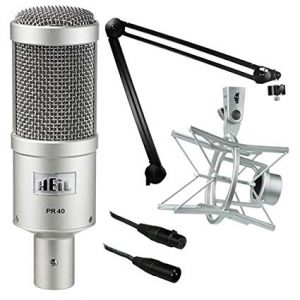
Sometimes appearance matters, especially with more and more podcasts moving to video. So you may need something a little more aesthetically pleasing. The Heil PR-40 looks nice and also an excellent functional microphone. This beauty comes with a bigger price tag than the ATR, costing more than $300, but it looks like a legitimate recording studio mic. So if you need to visually look the part you may need to consider this option.
Note: If you don’t have a mixer, you will need to purchase a separate XLR to USB cable with the Heil PR-40.
Condenser microphones
Your recording set-up will play a part in determining what kind of microphone you’ll want. A condenser mic is built to be omnidirectional. Meaning it will pick up all the noises in your room. This works if you record in a quiet studio or with multiple people near each other. However in the wrong setting, they can provide terrible audio.

Blue Yeti is a great condenser microphone you can find online for around $130. Current models have settings for how the mic picks up sound, so it can actually have the feel of a dynamic mic.
Finding your style
What kind of microphone should you start with as a podcast guest? It depends. The microphone you choose will depend on a few things. Style is one factor, as is cost. Brands like Shure, Neumann, MXL, Rode, Behringer and more.
As a podcast guest, quality is important. However, keep in mind that your interview lifespan may be limited. Spending all your budget on a microphone may not be the wisest move.
As you explore podcasting and maybe decide to launch your own show, you may end up with an upgrade. Until then, consider your recording space, your style and your budget.
Headphones
You have more freedoms when it comes to headphones, it is largely a personal preference. No matter what headphones you use, they are necessary to avoid feedback from your speakers back into your mic.
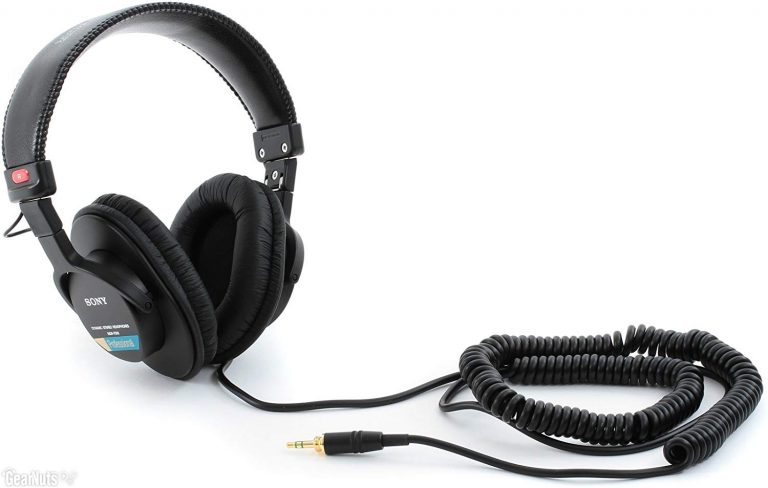
Probably the biggest consideration is the style. Earbuds work just fine, especially if you don’t want to mess up your hair. Just make sure you are not using the microphone on the earbuds for your audio, you want to stick with your nice professional mic.
Others prefer the classic “can” style headphones. These are nice because they are better at blocking out background noise, which eliminates distraction so you can focus better on your conversation. Regardless of your choice you want something that is comfortable. Tom prefers the SONY MDR 7506 Professional, which are just under $100 on Amazon because they are comfortable and have great sound quality.
Video Equipment
More and more podcasts include video, the pandemic was a major catalyst in this change. Pre-pandemic one in five podcasts captured video, now three out of four are video. So, it’s probably a good idea to be camera ready with the right video equipment.
Much like audio, your video quality can effect how the audience receives your message. With an added factor of how your video quality is relative to the podcast host. As more podcasts move to video and invest in equipment, you want to match their quality as to not diminish how your expertise is received.
Video equipment can get expensive quickly so you want to consider your budget and usage. How often will you use it? What will it be used for? Here are our Good, Better, and Best camera suggestions.

Good
Your computer likely has an internal camera. Unless your computer is brand new and has an amazing camera we suggest getting an external webcam. Logitech makes some good basic webcams starting around $30 like this the C615.
Better
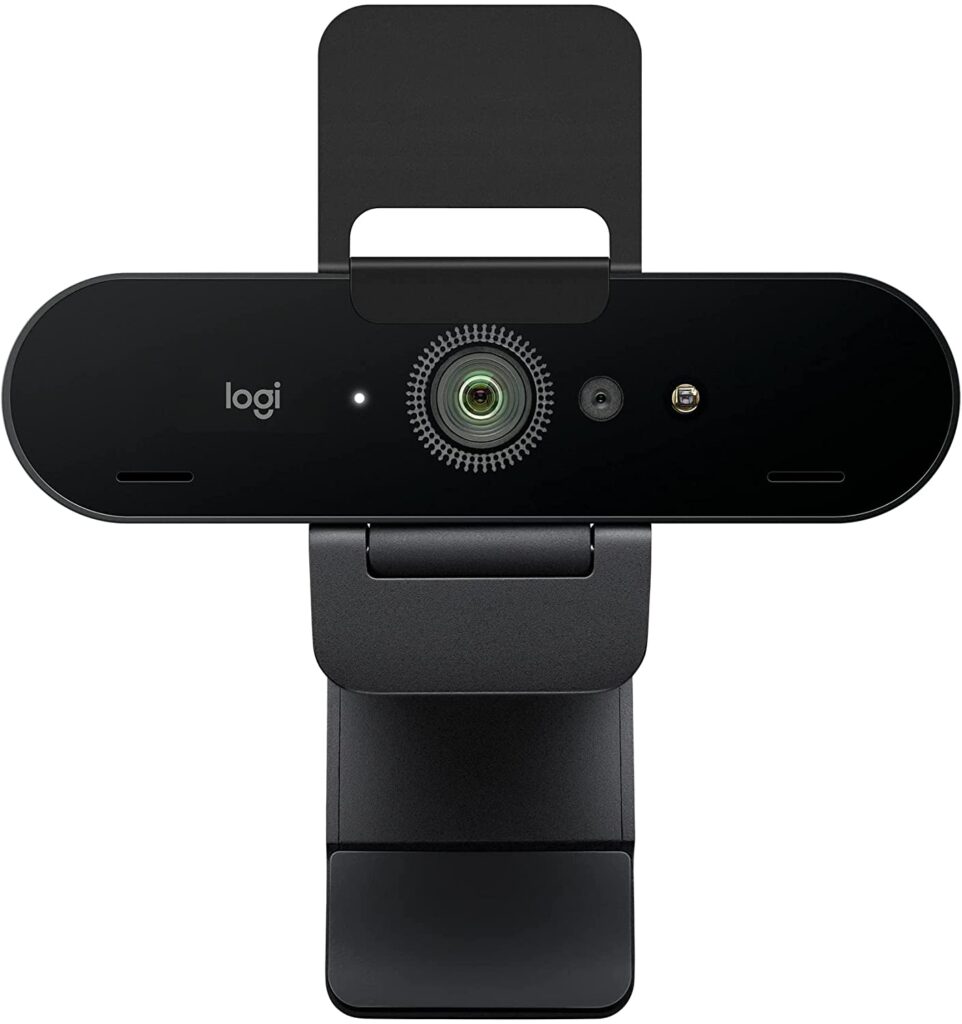
With the growing popularity of video, many hosts are moving to 4K video. This is nice because your video will look just as good on a big screen TV as it does on your phone. The Logitech Brio comes in at under $150, offers 4K plus has controls to give you a wide or narrow view.
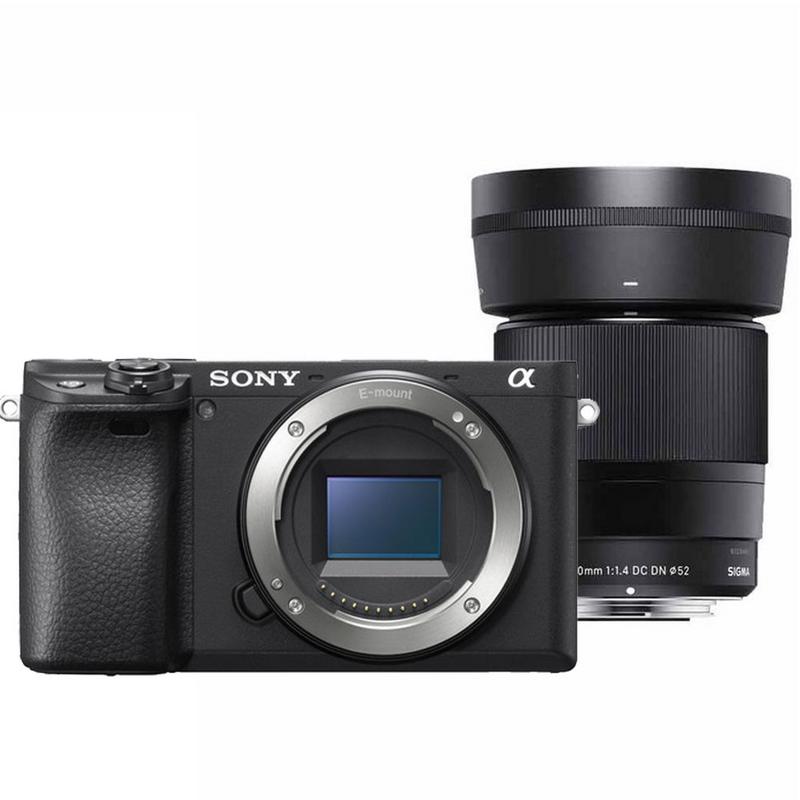
Best
If you want studio quality video, a DSLR camera can give you that. In addition to high quality video, it gives you depth of field meaning you can slightly blur your background or keep it crisp and sharp. The difference is will be noticable by your audience but it will cost you. Be ready to invest around $1,000 for a DSLR camera, lenses and cables.
Tom does a lot of video between meetings, podcast interviews, speaking engagements and live events so he opted for the DSLR investment. He currently uses the Sony Alpha a6400.
Extras
Here are some accessories we suggest to dress up your mic and improve its functionality.
Cough Switch

This little gadget comes in handy. You will be amazed how often you may need to easily mute for a cough or sneeze. The Short Stop Momentary Muting Switch made by Pro Co allows you to push a button to cut your sound without any noticeable click in the audio. As long as you are holding the button down you are muted, which will eliminate any confusion if your mute is off or on. You can get that here for around $100.
Note: This requires an XLR connection. So, if you are plugging straight into your computer you will need an XLR to USB adapter cable like this one, $12.
Microphone Arm
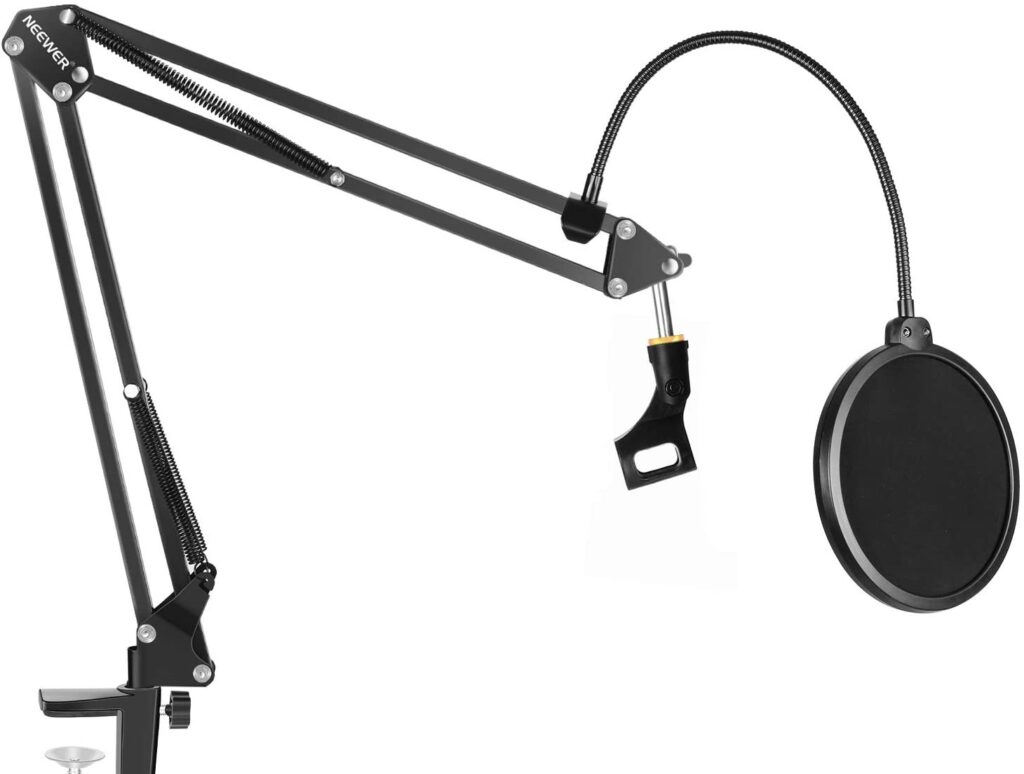
An arm allows you to mount your mic to your desk or table and move it around as needed. This Neewer boom arm kit comes complete with a pop filter and adapter for less than $20.
Microphone Flag
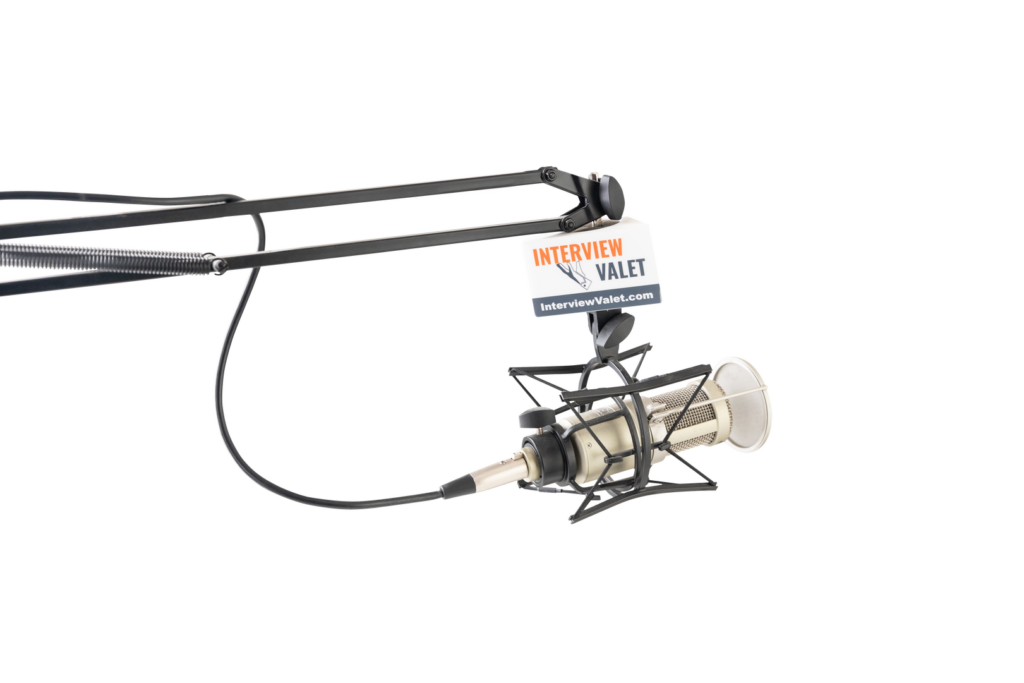
A mic flag is a great way to subtly brand all of your appearances. There is a reason why TV reporters always use them, anyone who watches the video or sees a screen grab will see it. It’s great for branding consistency for public interviews or private video chats with clients. We’ve found the best mic flags come from Impact PBS, staring around $50.
Pro Tip: If you have multiple brands, consider a 3-sided model so you can rotate as necessary for appropriate branding.
Pop Filter

If you find that you pop your P and B letters you may want to add a pop filter. They are low cost but really help improve your audio quality. They are largely universal and easily attach to the front of your mic. This Aokeo is $11 on Amazon.
See This Equipment Used In Real Time
Go behind the scenes of Tom’s office. Tom, having done over 1000 interviews himself, shows the equipment he has found that work best for the podcast platform. See in real time how different cameras and microphones make you look and sound while you’re recording.
See This Equipment Used In Real Time
Go behind the scenes of IV founder Tom Schwab’s office. Tom has had plenty of practice with recording equipment, having done more than 1200 interviews. He walks through different recording equipment in real time, showing what works best for podcasts and why.

